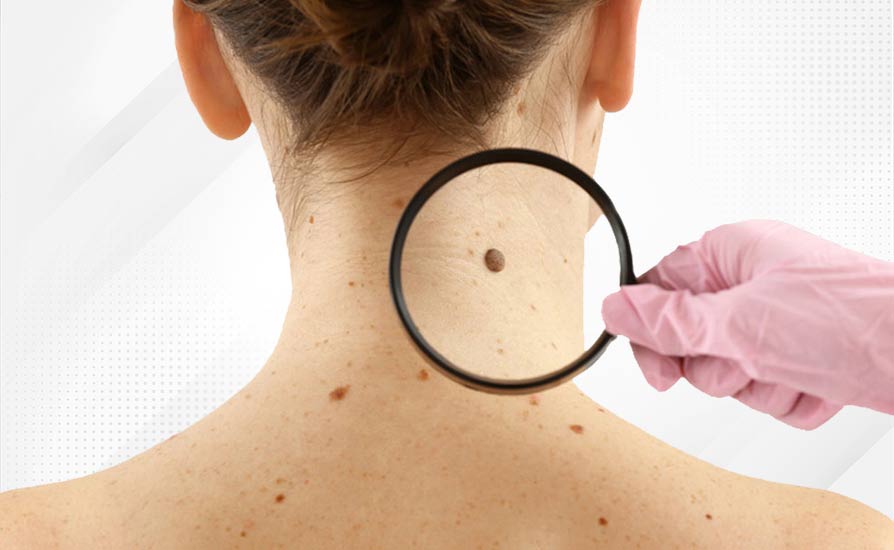Moles are quite common. Almost every adult has a few of them. Fair-skinned adults usually have more moles. There can be between 10 to 40 moles on the skin, and this is quite normal.
Most moles are seen on the skin during childhood and adolescence. As a child (or young person) grows, moles also grow. Some moles may darken, while others may lighten. These changes are expected and rarely a sign of melanoma.
New moles in adults and changes in existing moles can be signs of melanoma. Early-detected melanoma can be treatable.
Here are three facts that can help you detect melanoma early and seek treatment:
• A mole or a change in an existing mole is often the first sign of melanoma.
• You can detect melanoma early by checking up your own skin.
• If you notice a growing, itching, bleeding, or otherwise changing mole or any other spot, you should immediately see a dermatologist.
Moles usually do not require treatment. You may consider getting your mole removed if the following conditions apply:
• It is bothersome (rubbing against clothing, etc.).
• Its appearance is bothersome.
• It is suspicious (may be skin cancer).
Most mole removal procedures only require a visit to the doctor’s office. In some cases, a second visit may be needed.
Whether during one or two visits, a dermatologist can safely and easily remove a mole.
Surgical excision: The dermatologist cuts out the entire mole and, if necessary, stitches up the skin. The mole will also be examined under a microscope by a specially trained doctor. This is done to check for cancer cells. If cancer cells are found, your dermatologist will inform you.
Shave excision: The dermatologist uses a surgical blade to remove the mole. In most cases, a specially trained doctor will examine your mole under a microscope. If cancer cells are found, your dermatologist will inform you.











